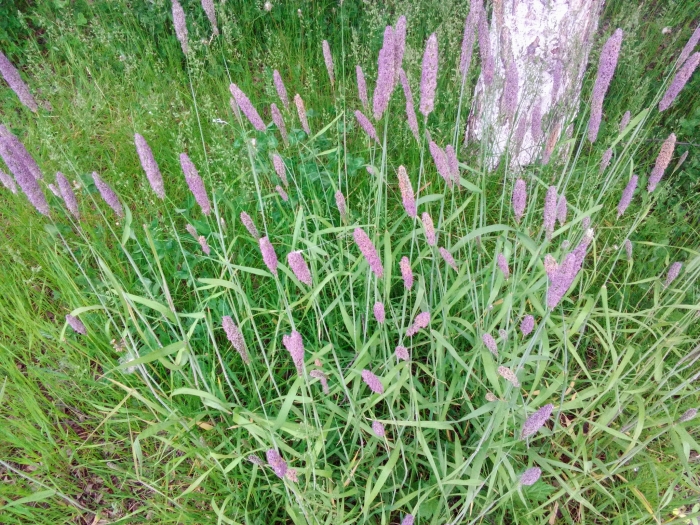Timothy-Grass
(Phleum pratense)
Timothy-Grass (Phleum pratense)
/
/

Виктория Билоус
CC BY 4.0
Image By:
Виктория Билоус
Recorded By:
Copyright:
CC BY 4.0
Copyright Notice:
Photo by: Виктория Билоус | License Type: CC BY 4.0 | License URL: http://creativecommons.org/licenses/by/4.0/ | Rights Holder: Виктория Билоус | Publisher: iNaturalist | Date Created: 2020-06-07T19:06:14-07:00 |





















































Estimated Native Range
Summary
Phleum pratense, commonly known as Timothy-Grass, is a deciduous perennial grass native to open grasslands, meadows, and fields of Europe, Central Asia, the Middle East, North Africa, and Siberia. It typically grows to a height of 48–150 cm (19–59 in) with a clumping habit. The leaves of Timothy-Grass can reach up to 43 cm (17 in) in length and 1.3 cm (0.5 in) in width, are hairless, rolled rather than folded, and the lower sheaths turn dark brown as they age. The flowerhead is cylindrical, 70–152 mm (2.75–6 in) long and 6.4–12.7 mm (0.25–0.5 in) broad, with densely packed spikelets that give it a characteristic appearance. It blooms from June to September, with flowers that have pink stamens and are not particularly showy.
Timothy-Grass is valued for its high forage quality and is widely used in hay production for livestock feeding. It is also planted for erosion control due to its dense root system. While it can grow in heavy soil, Timothy-Grass prefers well-drained soils and full sun exposure. It is known for its resistance to cold and drought, which allows it to thrive in dry upland or poor sandy soils. However, in pasture settings, it may be outcompeted by more aggressive grass species. After cutting, it regrows slowly, which can be a consideration for management in cultivated settings. Gardeners should be aware that Phleum pratense can become invasive outside its native range, particularly in the United States, and should check local regulations before planting.CC BY-SA 4.0
Timothy-Grass is valued for its high forage quality and is widely used in hay production for livestock feeding. It is also planted for erosion control due to its dense root system. While it can grow in heavy soil, Timothy-Grass prefers well-drained soils and full sun exposure. It is known for its resistance to cold and drought, which allows it to thrive in dry upland or poor sandy soils. However, in pasture settings, it may be outcompeted by more aggressive grass species. After cutting, it regrows slowly, which can be a consideration for management in cultivated settings. Gardeners should be aware that Phleum pratense can become invasive outside its native range, particularly in the United States, and should check local regulations before planting.CC BY-SA 4.0
Plant Description
- Plant Type: Grass
- Height: 3-5 feet
- Width: 1-3 feet
- Growth Rate: Rapid
- Flower Color: N/A
- Flowering Season: Spring
- Leaf Retention: Deciduous
Growth Requirements
- Sun: Full Sun
- Water: Medium
- Drainage: Medium, Slow
Common Uses
Bird Garden, Butterfly Garden, Drought Tolerant, Low Maintenance
Natural Habitat
Open grasslands, meadows, and fields
Other Names
Common Names: Timothy, Common Timothy, Meadow Cat’s-Tail, Common Cat’s Tail, Meadow Timothy, Eng-Rottehale, Wiesen-Lieschgras, Nurmitähkiö, Timotei, Fléole Des Champs
Scientific Names: , Phleum pratense, Phleum nodosum, Phleum pratense subsp. nodosum, Phleum nodosum var. pratense, Phleum pratense var. nodosum, Phleum pratense var. pratense, Phleum crassicaule, Phleum pratense var. viviparum, Phleum praecox
GBIF Accepted Name: Phleum pratense L.